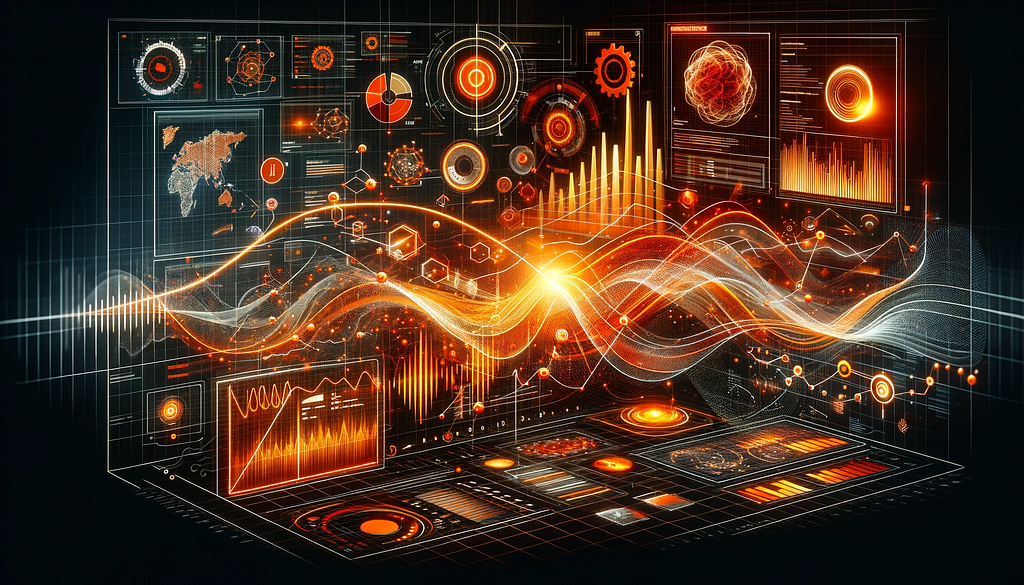The text discusses the concept of using Neural ODE to model dynamical systems with a focus on two case studies: system identification and parameter estimation. It covers the implementation details of the Neural ODE approach, including defining the neural network model, data preparation, training loop, assessment, and overall summary. The approach effectively approximates unknown dynamics and estimates unknown parameters from observational data. It also provides references for further exploration.

“`html
Concepts, case studies, step-by-step implementations

For many physical systems, properly modeling their dynamical behaviors lays the foundation for system understanding, forecasting, and control. Mathematically, ordinary differential equations (ODEs), which describe the rate of change of system states over time, are widely used to characterize the dynamical systems. Correspondingly, many analytical and numerical solvers have been developed that can effectively solve the ODEs, thus allowing us to portray the system state trajectory.
However, there is one condition for using ODE solvers: we need to have complete knowledge of the ODEs. For many real-world, complex systems, unfortunately, this requirement is rarely fulfilled: for some, we may know the functional form of the ODEs but don’t know the associated model parameters; for others, even their functional form is hidden from us. Without explicit equations, using ODE solvers for dynamical system modeling is out of reach.
So how to address this issue?
One promising way is to adopt a data-driven mindset and leverage machine learning algorithms to infer the unknown dynamics from the observed data of the system states.
In this blog post, let’s explore one specific algorithm that can achieve this goal: Neural ODE. More specifically, we will first gain a conceptual understanding of how the Neural ODE approach can be used for dynamic modeling. Afterward, we will get hands-on and implement a Neural ODE model to address two case studies.
Disclaimer: As a tutorial, the Neural ODE implementation presented in this blog prioritizes simplicity and transparency. For more advanced implementations/libraries that are optimized for large-scale real-world challenges, please check out the reference I compiled at the end of this blog.
With that in mind, let’s get started!
Table of Content
- 1. What is Neural ODE?
- 2. Case Study Descriptions
- 2.1 Case study 1: System identification
- 2.2 Case study 2: Parameter estimation
- 3. System Identification
- 3.1 Concept
- 3.2 Solving ODEs with numerical schemes
- 3.3 Training strategy
- 3.4 Dataset preparation
- 3.5 Define the neural network model
- 3.6 Define loss function
- 3.7 Training loop
- 3.8 Assessment
- 4. Parameter Estimation
- 4.1 Strategy
- 4.2 Implementation
- 4.3 Results
- 5. Summary
- Reference
Important!
If you want to evolve your company with AI, stay competitive, use for your advantage Modeling Dynamical Systems With Neural ODE: A Hands-on Guide.
Discover how AI can redefine your way of work. Identify Automation Opportunities: Locate key customer interaction points that can benefit from AI.
Define KPIs: Ensure your AI endeavors have measurable impacts on business outcomes.
Select an AI Solution: Choose tools that align with your needs and provide customization.
Implement Gradually: Start with a pilot, gather data, and expand AI usage judiciously.
For AI KPI management advice, connect with us at hello@itinai.com. And for continuous insights into leveraging AI, stay tuned on our Telegram t.me/itinainews or Twitter @itinaicom.
Spotlight on a Practical AI Solution:
Consider the AI Sales Bot from itinai.com/aisalesbot designed to automate customer engagement 24/7 and manage interactions across all customer journey stages.
Discover how AI can redefine your sales processes and customer engagement. Explore solutions at itinai.com.
If you would like to learn more of physics-informed learning, I invite you to check out the following blogs: Unraveling the Design Pattern of Physics-Informed Neural Networks, Operator Learning via Physics-Informed DeepONet: Let’s Implement It From Scratch, Discovering Differential Equations with Physics-Informed Neural Networks and Symbolic Regression.
You can also subscribe to my newsletter or follow me on Medium.
Reference
- [1] Logistic growth system
- [2] Physics-informed machine learning
- [3] TorchDyn
- [4] DiffEqFlux.jl
“`
List of Useful Links:
- AI Lab in Telegram @aiscrumbot – free consultation
- Modeling Dynamical Systems With Neural ODE: A Hands-on Guide
- Towards Data Science – Medium
- Twitter – @itinaicom

























